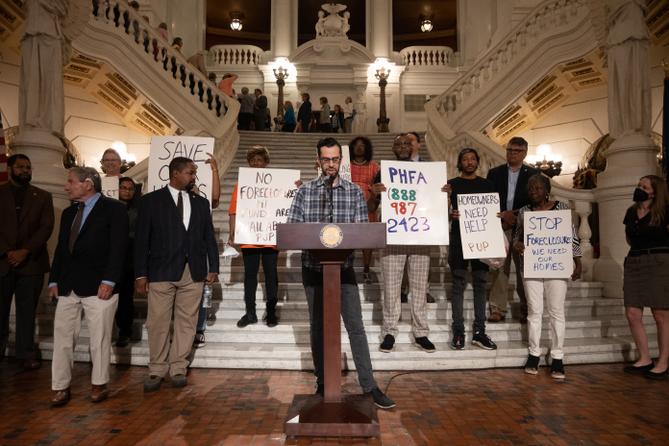Spotlight PA is an independent, nonpartisan, and nonprofit newsroom producing investigative and public-service journalism that holds the powerful to account and drives positive change in Pennsylvania. Sign up for our free newsletters.
HARRISBURG — A crucial program to help Pennsylvania homeowners recover from the pandemic is still struggling to get the money out almost five months into the state’s attempts to overhaul it.
Earlier this year, Spotlight PA reported that the $350 million Pennsylvania Homeowner Assistance Fund was overwhelmed by demand. Applicants were waiting as long as nine months for help, with their homes and utility service on the line. Homeowners often complained they were left in the dark after caseworkers at the company hired to run the program stopped responding to them.
In late January, the Pennsylvania Housing Finance Agency announced that it would end the contract and run the program itself. But since then, many problems have persisted, new ones have emerged, and thousands of applicants still have not received aid.
Here are five key takeaways from our follow-up investigation:
The number of pending applications was three times larger than the agency realized
When PHFA decided to take over from the company hired to administer the program, the agency did not realize what it was getting into. Officials initially believed there were roughly 6,000 pending applications. It wasn’t until the agency had decided to end the contract with Innovative Emergency Management, Inc. that it discovered the real number was more than 18,000. Transferring all the case files into a new system took months.
Jon Mabry, IEM’s vice president of disaster recovery, said the agency should have known how many cases there were because the company provided daily reports. But PHFA spokesperson Scott Elliott said the reports were confusing and did not make the status of pending applications clear.
“I am really confused,” a PHFA official told an IEM manager via email as the discrepancy came to light.
About half of those pending applications are still in limbo
Homeowners who already applied must register in the new system before they can get help. This is necessary for legal reasons, as well as to ensure that the information originally submitted is correct and up-to-date, said Elliott. But many applicants aren’t even in line to receive assistance: By late July, only about half the applications had been registered.
PHFA has been calling and emailing applicants to remind them to sign up, as well as sending letters in the mail and holding events across the state, Elliott said.
Most people who have successfully registered are still waiting
By late July, the agency had reviewed only about one-third of the applications that had been successfully registered in the new system. And out of almost 9,500 applications registered, only about 920 had been fully paid out, as of July 24.
Assistance from the program sometimes stopped abruptly
Some applicants qualify to receive up to six months of ongoing mortgage aid, in addition to help with late mortgage and utility bills.
As a result of the transition from IEM to PHFA, though, some homeowners found that these payments stopped with no warning, leaving them scrambling to cover bills the state had already said it would cover.
PHFA’s attempts to prioritize the homeowners at greatest risk had mixed results
With thousands of people still waiting for help, PHFA said it would give priority to the homeowners at greatest risk of losing their homes, or having their utilities shut off. But the agency doesn’t always have a clear picture of who is most in need. As a result, the system for prioritizing applications is uneven.
One homeowner interviewed by Spotlight PA had his water shut off for more than 10 weeks while waiting for utility assistance, despite numerous calls and emails to the program telling them his service had been disconnected.
Read the full story, and the rest of our reporting on the program’s struggles, at spotlightpa.org/series/the-waiting-game/.
BEFORE YOU GO… If you learned something from this article, pay it forward and contribute to Spotlight PA at spotlightpa.org/donate. Spotlight PA is funded by foundations and readers like you who are committed to accountability journalism that gets results.
